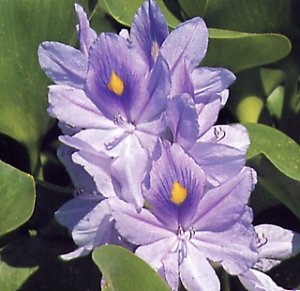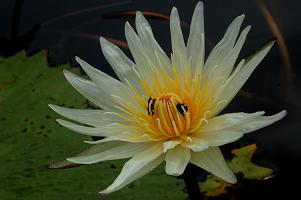|

Aquatic Plant










With the loss of Mangroves and top soil growth plants to prevent errosion, the increase in monoculture that will leach chemicals into the water supply as well as the increase in E. Coli in drinking water, I feel it is important to educate people on the importance of aquatic plants and how they can purify toxic materials in water as well as provide other usefull sources.
Primarily the monoculture that is taking over good farm land is of no value for food. The ancient Aztecs built ‘chinampas’ (networks of canals and stationary artificial islands) in which they cultivated crops on the islands using nutrient-rich mud and water from the canals and their nutrients come from the fish filled waters below. This could be one solution to the upcoming destruction of a delicate ecosystem that is currently the home for several endangered species of animals in Lake Izabal.
 Some consider Aztec chinampas to be the first example of aquaponics. Others refer to ancient Egypt. Either way, it is clear that aquaponics have ancient roots. By layering the most invasive, high maintenance plants such as the hyacinth closest to land, it will be the first to catch the highest levels of pollutants and the easiest to harvest and thin out as the crops get too big. Therefore aiding in its ability to create bio-gases, then alternating other aquatic plants between the vegetable islands and the main waterway. This process will in some respect replace the loss of Mangroves that once achieved that function. Some consider Aztec chinampas to be the first example of aquaponics. Others refer to ancient Egypt. Either way, it is clear that aquaponics have ancient roots. By layering the most invasive, high maintenance plants such as the hyacinth closest to land, it will be the first to catch the highest levels of pollutants and the easiest to harvest and thin out as the crops get too big. Therefore aiding in its ability to create bio-gases, then alternating other aquatic plants between the vegetable islands and the main waterway. This process will in some respect replace the loss of Mangroves that once achieved that function.


Water Hyacinth(Eichhornia crassipes)
An extremely invasive plant with a substancial root system that is extremely tolerant of, and has a high capacity for, the uptake of heavy metals, including Cd, Cr, Co, Ni, Pb and Hg, which could make it suitable for the biocleaning of industrial wastewater from mining and monoculture run off. With maintenance and control, this plant is an excellent source for biogas production as well as biochar for soil composting, alternative charcoal, basketry and furniture making Click on the picture for more information.


Water Lettuce(Pistia stratiotes)
Water lettuce is a favorite food for manatees that like the leaves and fish that like to roots. It is also an invasive plant that can provide cover for fry and small fish. It is also helpful as it outcompetes algae for nutrients in the water, thereby preventing massive algal blooms. It's also one of the Manatee's favorite snacks!

 Spider Lily
Hymenocallis (Hymenocallis caribaea)
There are over 64 species of this plant but they consist of six narrow, curved petals attached to a shallow cup which is formed from the fused stamens. The effect is of a spidery daffodil or lily, thus explaining the common name "spider lily" for some species.

 Duck Weed
(Lemnoideae)
Duckweed is an important high-protein food source for waterfowl and also is eaten by humans as it contains more protein than soybeans, it is sometimes cited as a significant potential food source. Duckweed is 40% Protein, approximately 15% Fiber and contains vitamins A and C. The plants can provide nitrate removal, if cropped, and the duckweeds are important in the process of bioremediation because they grow rapidly, absorbing excess mineral nutrients, particularly nitrogen and phosphates. For these reasons they are touted as water purifiers of untapped value.

 Fragrant Water Lily
(nymphaea odorata)
There are about 70 different species of water lilies. These are grouped into: night, tropical and hardy. Night lilies bloom in the night. Tropical lilies can be found in tropical climates and bloom at all times of the day. Hardy lilies are able to withstand most conditions and are the most common. Now I'm not sure of the properties of this species, but the Nymphaea caerulea water lily was used for vision quests. I'll leave it at that.

 Cattail
(Typha domingensis) A highly useful plant as it can provide a food source, building material, biofuel, fiber, is able to remove poisonous elements from drinking water and the seeds can even be used for bedding, diaper absorbant and dipped in wax or fat and lit it will work as a candle, then smolder and repel insects
If the stink doesn't kill you, the aristolochic acid will! Beware of the dutchman's pipe (Aristolochia)! Species of Aristolochia such as Aristolochia clematitis have been traditionally used in both western and Chinese medicine, with occasionally fatal outcomes. When it doesn't kill, it has also been known to cause nephropathy or liver disease.

 Floating Heart(Nymphoides indica)
The petals have unusual, feathery edges. The flowers are formed above the floating leaves with 20-40 mm long stalks from about October until May. It gets its common name, of floating hearts because of the heart-shaped, bright green leaves which lie on the water surface like those of water lilies (Nymphaea species).


Hydrilla(Hydrilla verticillata)
Hydrilla is NOT a beneficial plant. Native to the warmer areas of Asia and could easily be called the perfect aquatic plant because of the extensive adaptive attributes it possesses to survive in the aquatic habitat. These characteristics allow Hydrilla to be an aggressive and competitive colonizer of aquatic habitats. Hydrilla has become a serious pest anywhere it has had time to establish.

 Tapegrass
(Hydrocharitaceae vallisneria)
Without getting too technical, it is concluded that ammonia concentration decreased rapidly while the nitrogen load less than 20.0 mg/L, and the ammonia concentration ratio in the inorganic nitrogen increased remarkably with the nitrogen load increasing.

 Floating Fern(Salvinia auriculata)
Salvinia auriculata has been used as a bioindicator of presence and contamination levels of heavy metal cadmium (Cd) in aquatic environments (Outridge and Hutchinson, 1990). Cadmium (Cd) is a major concern due to its toxicity, high mobility among plants, and easy incorporation to the biological food-webs. However, Salvinia auriculata's use has been limited due to morphological and population status, only evident where a high pollutant concentration is present. Aquatic ecosystems have been significantly altered by multiple environmental impacts in association with human disturbances (Jiang and Wang, 2007). Extensive use of fertilizers and intensification of industrial and mining activities contaminate watercourses and water-bearing stratum with heavy metals.
|





















